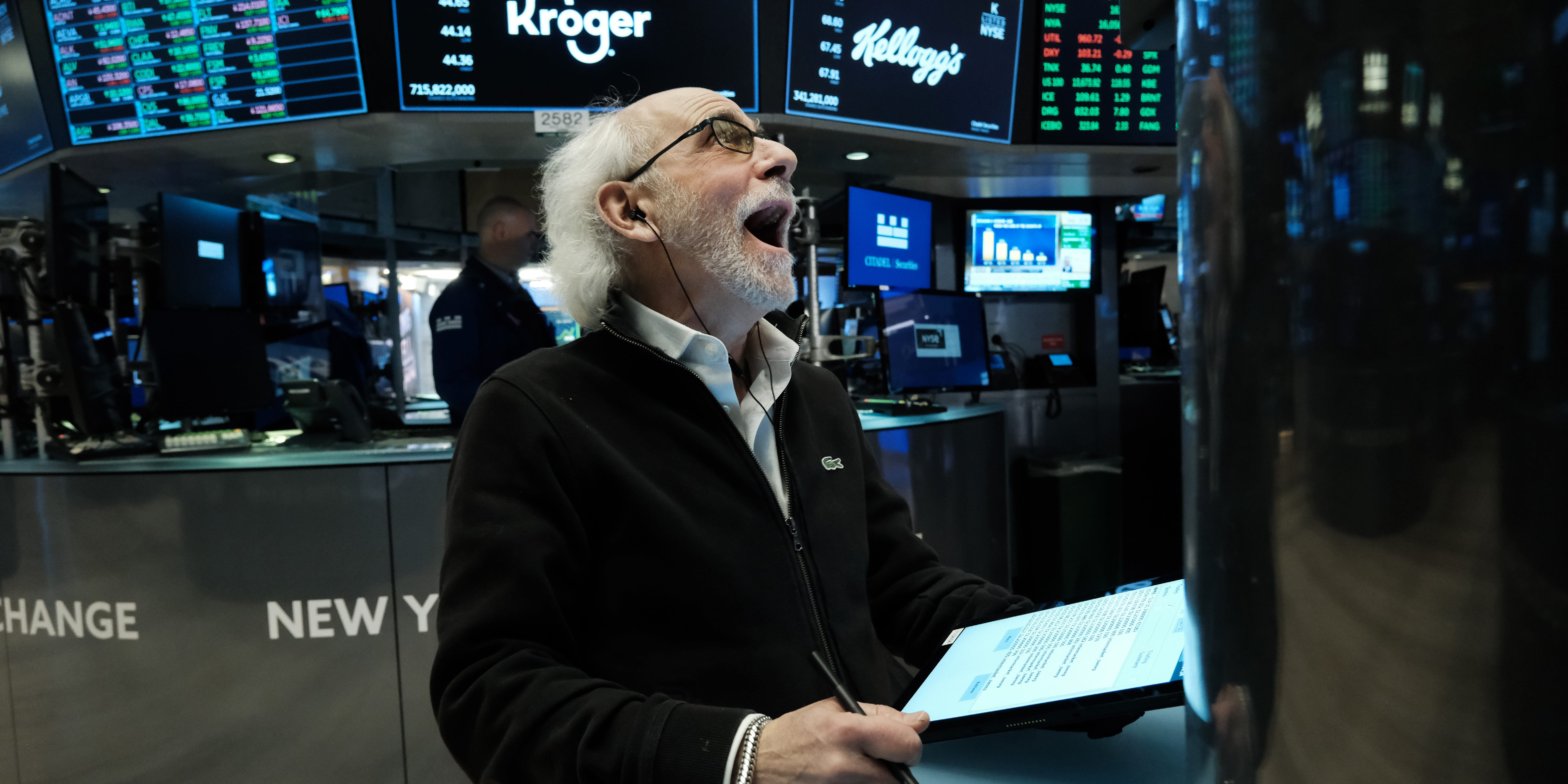The “good economic news is bad news” narrative continues to dominate the stock market. The recent stock rally is crumbling as inflation data shows the Fed still has more work to do. But data also shows the economy is strong, and that could help the US avoid a recession. Loading Something is loading.
Thanks for signing up!
Access your favorite topics in a personalized feed while you’re on the go.
From a robust jobs market to strong consumer spending, the US economy has been getting a lot of good news lately.
But investors aren’t cheering for a strong economy. In fact, markets are behaving like they want the opposite, with stocks mired in a deep sell-off as upbeat data suggests more aggressive moves by the Federal Reserve.
Sure, inflation remains hot, as evidenced by Friday’s Personal Consumption Expenditure data which showed prices climbed more than anticipated in January. But that is also part of the market’s — and the economy’s — conundrum.
Following a dismal 2022 for the S&P 500, which lost 20% last year, the stock market soared in the first six weeks of the year as traders bet that inflation was cooling and the Fed would be less aggressive with its policy.
In the last two weeks though, the rally has stumbled as inflation concerns rear their head again. On Friday, PCE data for January came in hotter than expected, sending stocks plunging toward their second consecutive week of losses. This follows data earlier in the month that showed the US economy has been resilient in the face of higher interest rates.
Good economic news has been having a negative impact on the market because it suggests the Fed is going to keep tightening the screws on monetary policy, hitting corporate earnings growth and share prices. And given inflation’s stickiness in January, a higher-for-longer approach for interest rates looks increasingly likely.
The market often operates in one of two modes. It is either aligned with the economy and rising or falling with the data, or it is decoupled — like it is now — jumping on negative developments and falling when there’s good news. Investors have been in the latter mode for about a year now.
But here’s the catch: while a humming economy foreshadows more Fed hawkishness, that strength could save the US from a severe recession.
The disconnect between markets and the economyTwo recent data points stand out when probing for answers about the state of the US economy. The first is January’s monster jobs report. Employers added 517,000 jobs last month, bringing the unemployment rate to a 53-year low of 3.6%.
The second is consumer health, reflected in January’s retail sales and consumer spending data, both of which exceeded estimates.
Resurgent inflation is indeed the Fed’s worst nightmare, but the data also prompts the question: Is a recession really in the cards, given the strength of the consumer and jobs market?
Either way, the stock market doesn’t seem to care. All investors can see is higher rates, which inflict the double whammy of eating into corporate earnings and making other investments more attractive compared to relatively high-risk equities.
“This morning’s data suggest the economy is very resilient and might prompt more bets that the Fed will need to take rates closer to 6.00%,” wrote Oanda’s Ed Moya in a note following the release of January PCE data.
Meanwhile, Nationwide’s chief of economic research Mark Hackett wrote in a note that recession odds are declining even as inflation remains hot and more rate hikes look likely.
“The odds of a recession are still elevated, though Bloomberg’s Recession Probability Forecast declined this week for just the second week since May 2021 to 60% over the next year. The Citigroup Economic Surprise Index surged to the best level since last April, gaining 60 points since mid-January, with data that measures current activity remaining strong,” Hackett wrote.
It wasn’t long ago that Bloomberg’s model was predicting a 100% chance of recession.
Even the inverted yield curve, history’s most reliable recession indicator, hasn’t tempered enthusiasm. This is because there’s another pocket of resilience compared to previous economic downturns. As Ned Davis Research put it:
“In an ample reserves regime that we’ve been in post-[financial crisis], banks also have plenty of deposits. They don’t need to borrow in the fed funds market to meet reserve requirements. As a result, inverted curves are less effective in the transmission of financial conditions to the real economy.”
This month, economist Jeremy Siegel also reiterated his view that the Fed doesn’t need to spark a downturn to fight inflation, and told investors to stop throwing a “tantrum” over inflation news.
Siegel has long held the view that inflation is actually overstated in the official statistics given the lag between rate hikes and when their effect shows up in the real economy.
So there’s strength underpinning the economy, even as traders prepare for the worst and the Fed digs in for a longer fight against high prices.
And, ultimately, the Fed will have the last word for stocks, even if the economy holds up to its aggressive policy.
The only thing Jerome Powell sees when the US gets a blowout jobs report or when consumer spending surges is hot inflation, and that will dictate both the central bank and the market’s movements this year.
